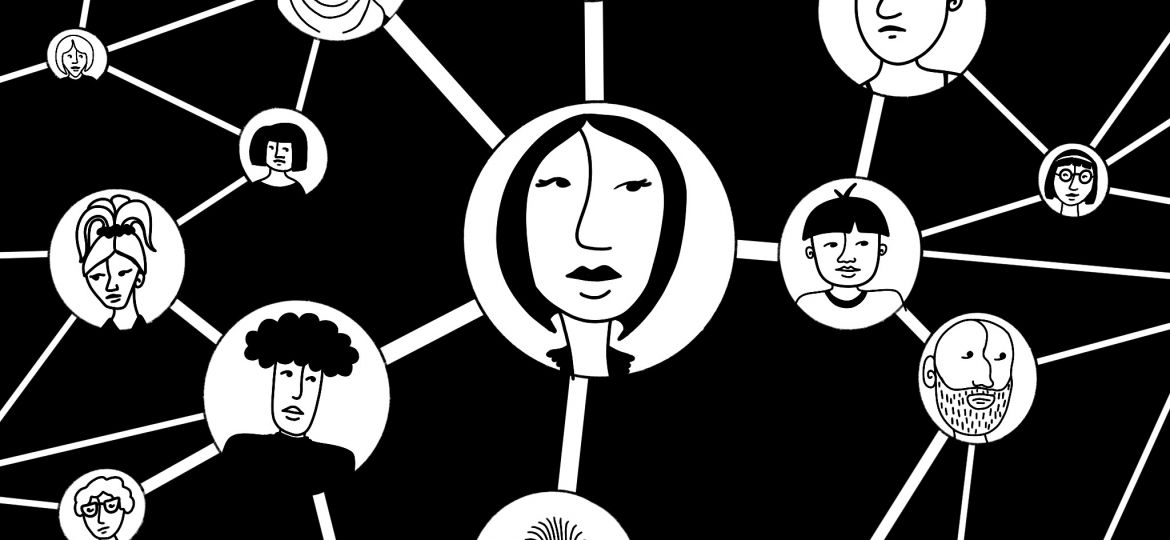
While all members of the St. Olaf community are adapting as a result of the COVID-19 pandemic, day-to-day operations have shifted for the 34 members of the St. Olaf Contact Tracing Team. Made up of three lead team members who organize and plan the contact tracing approach and 31 contact tracers, the Contact Tracing Team are existing staff members who have an increased capacity for other work in the COVID-19 age, such as event coordinators and travel management positions.
This team is “set up to succeed,” according to Aida Mejia-Fergen, one of the three team leads — ready to jump into whatever task needed to best suit the needs of the St. Olaf community.
The process used for the contact tracing of COVID-19 is nothing new in the public health community and has been used for hundreds of years to reduce and stop the spread of other outbreaks. All team members are trained in this effective method of contact tracing through a five to six hour onboarding training through Johns Hopkins, recommended by the Minnesota Department of Health.
According to Mejia-Fergen, “a major reason COVID-19 is a pandemic is because of how easily it is transmitted,” and emphasized that the more we know about reducing the spread, the better we can keep the community healthy. Contact tracing can quickly become an around-the-clock task to maintain its effectiveness in the St. Olaf community.
After a positive COVID-19 result comes back, the contact tracing process begins. Generally, one of the two registered nurses on staff delivers the results. One of the team leads then assigns each positive case a tracer who quickly contacts the individual by phone or email.
“Time is essential to stop the spread,” Mejia-Fergen said. “So we must act quickly to let them know their next steps and to start separating them from others.”
After the positive individual has been informed, they work closely with a contact tracer to retrace their steps. First, they are asked when — if ever — they started feeling symptoms and what date their positive test was conducted on in order to determine a window of time and inform which days are necessary for isolation and investigation of their close contacts.
A student life case manager then works with the students to guide them through the steps to isolation. Before reentering the St. Olaf community after a positive test result, an individual must go through a 10 day isolation period and not exhibit symptoms for at least 24 hours.
The individuals are also asked to recall anyone who was within six feet of them for more than 15 minutes of time in order to identify close contacts. Then, these identified individuals are informed and follow a similar process with a 14 day quarantine.
One of the main parts of contact tracing is confidentiality. Throughout the entire process, individuals are only referred to by ID numbers or initials and never have their information shared with Student Life or the President’s Leadership Team. Any information the community has about cases or positive tests comes from other sources, such as friends or community members, and not from the contact tracers.
Overall, the contact tracing team, “only wants to know what’s relevant to stopping the virus,” Mejia-Fergen said. “The biggest goal is to separate infected individuals from the non-infected population. The virus can multiply quickly, but can be gone faster if people are cautious, wise about decisions and follow standard safety precautions like mask-wearing and social distancing.”
One of the most important characteristics that a contact tracer can have is being a good listener.
“Everyone comes to a situation with their own backgrounds, experiences and life situations,” Mejia-Fergen said. Being told they have to quarantine can mean different things for different people, and contact tracers must have people skills, patience and willingness to work with people during a challenging time.
“The contact tracing team is here to provide support and resources to those infected and those exposed without any judgement whatsoever,” Mejia-Fergen said.
Through contact tracing, team members learn that beyond all of the tools, training and formulas, contact tracing is, “an art within a science,” Mejia-Fergen said. The strategy is never complete and constantly needs to be tweaked and updated. Flexibility and adaptability are essential for team members as tests may come in at any time and need to be responded to as soon as possible.
“Keep the focus, move quickly, and don’t get frazzled by the chaos that surrounds COVID,” Mejia-Fergen said. “The only job is to move forward and get the job done.”
Additional resources about COVID-19 include the campus dashboard on the infection data and the contact tracing team contact information. Please email ContactTracing@stolaf.edu if you think you may have COVID or have been exposed; any information shared will be kept confidential.

